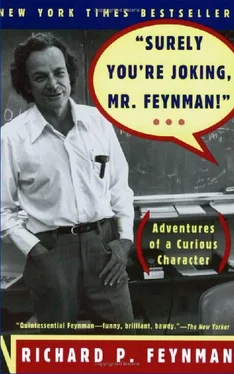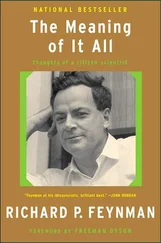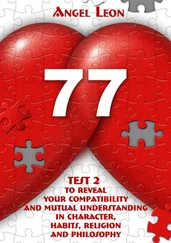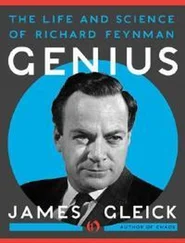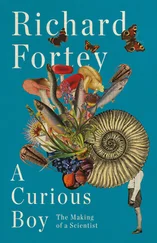A few days later a guy from the book depository called me up and said, “We’re ready to send you the books, Mr. Feynman; there are three hundred pounds.”
I was overwhelmed.
“It’s all right, Mr. Feynman; we’ll get someone to help you read them.”
I couldn’t figure out how you do that: you either read them or you don’t read them. I had a special bookshelf put in my study downstairs (the books took up seventeen feet), and began reading all the books that were going to be discussed in the next meeting. We were going to start out with the elementary schoolbooks.
It was a pretty big job, and I worked all the time at it down in the basement. My wife says that during this period it was like living over a volcano. It would be quiet for a while, but then all of a sudden, “BLLLLLOOOOOOWWWWW!!!!”—there would be a big explosion from the “volcano” below. The reason was that the books were so lousy. They were false. They were hurried. They would try to be rigorous, but they would use examples (like automobiles in the street for “sets”) which were almost OK, but in which there were always some subtleties. The definitions weren’t accurate. Everything was a little bit ambiguous—they weren’t smart enough to understand what was meant by “rigor.” They were faking it. They were teaching something they didn’t understand, and which was, in fact, useless, at that time, for the child.
I understood what they were trying to do. Many people thought we were behind the Russians after Sputnik, and some mathematicians were asked to give advice on how to teach math by using some of the rather interesting modern concepts of mathematics. The purpose was to enhance mathematics for the children who found it dull.
I’ll give you an example: They would talk about different bases of numbers—five, six, and so on—to show the possibilities. That would be interesting for a kid who could understand base ten—something to entertain his mind. But what they had turned it into, in these books, was that every child had to learn another base! And then the usual horror would come: “Translate these numbers, which are written in base seven, to base five.” Translating from one base to another is an utterly useless thing. If you can do it, maybe it’s entertaining; if you can’t do it, forget it. There’s no point to it.
Anyhow, I’m looking at all these books, all these books, and none of them has said anything about using arithmetic in science. If there are any examples on the use of arithmetic at all (most of the time it’s this abstract new modern nonsense), they are about things like buying stamps.
Finally I come to a book that says, “Mathematics is used in science in many ways. We will give you an example from astronomy, which is the science of stars.” I turn the page, and it says, “Red stars have a temperature of four thousand degrees, yellow stars have a temperature of five thousand degrees …”—so far, so good. It continues: “Green stars have a temperature of seven thousand degrees, blue stars have a temperature of ten thousand degrees, and violet stars have a temperature of … (some big number).” There are no green or violet stars, but the figures for the others are roughly correct. It’s vaguely right—but already, trouble! That’s the way everything was: Everything was written by somebody who didn’t know what the hell he was talking about, so it was a little bit wrong, always! And how we are going to teach well by using books written by people who don’t quite understand what they’re talking about, I cannot understand. I don’t know why, but the books are lousy; UNIVERSALLY LOUSY!
Anyway, I’m happy with this book, because it’s the first example of applying arithmetic to science. I’m a bit unhappy when I read about the stars’ temperatures, but I’m not very unhappy because it’s more or less right—it’s just an example of error. Then comes the list of problems. It says, “John and his father go out to look at the stars. John sees two blue stars and a red star. His father sees a green star, a violet star, and two yellow stars. What is the total temperature of the stars seen by John and his father?”—and I would explode in horror.
My wife would talk about the volcano downstairs. That’s only an example: it was perpetually like that. Perpetual absurdity! There’s no purpose whatsoever in adding the temperature of two stars. Nobody ever does that except, maybe, to then take the average temperature of the stars, but not to find out the total temperature of all the stars! It was awful! All it was was a game to get you to add, and they didn’t understand what they were talking about. It was like reading sentences with a few typographical errors, and then suddenly a whole sentence is written backwards. The mathematics was like that. Just hopeless!
Then I came to my first meeting. The other members had given some kind of ratings to some of the books, and they asked me what my ratings were. My rating was often different from theirs, and they would ask, “Why did you rate that book low?”
I would say the trouble with that book was this and this on page so-and-so—I had my notes.
They discovered that I was kind of a goldmine: I would tell them, in detail, what was good and bad in all the books; I had a reason for every rating.
I would ask them why they had rated this book so high, and they would say, “Let us hear what you thought about such and such a book.” I would never find out why they rated anything the way they did. Instead, they kept asking me what I thought.
We came to a certain book, part of a set of three supplementary books published by the same company, and they asked me what I thought about it.
I said, “The book depository didn’t send me that book, but the other two were nice.”
Someone tried repeating the question: “What do you think about that book?”
“I said they didn’t send me that one, so I don’t have any judgment on it.”
The man from the book depository was there, and he said, “Excuse me; I can explain that. I didn’t send it to you because that book hadn’t been completed yet. There’s a rule that you have to have every entry in by a certain time, and the publisher was a few days late with it. So it was sent to us with just the covers, and it’s blank in between. The company sent a note excusing themselves and hoping they could have their set of three books considered, even though the third one would be late.”
It turned out that the blank book had a rating by some of the other members! They couldn’t believe it was blank, because they had a rating. In fact, the rating for the missing book was a little bit higher than for the two others. The fact that there was nothing in the book had nothing to do with the rating.
I believe the reason for all this is that the system works this way: When you give books all over the place to people, they’re busy; they’re careless; they think, “Well, a lot of people are reading this book, SO it doesn’t make any difference.” And they put in some kind of number—some of them, at least; not all of them, but some of them. Then when you receive your reports, you don’t know why this particular book has fewer reports than the other books—that is, perhaps one book has ten, and this one only has six people reporting—so you average the rating of those who reported; you don’t average the ones who didn’t report, so you get a reasonable number. This process of averaging all the time misses the fact that there is absolutely nothing between the covers of the book!
I made that theory up because I saw what happened in the curriculum commission: For the blank book, only six out of the ten members were reporting, whereas with the other books, eight or nine out of the ten were reporting. And when they averaged the six, they got as good an average as when they averaged with eight or nine. They were very embarrassed to discover they were giving ratings to that book, and it gave me a little bit more confidence. It turned out the other members of the committee had done a lot of work in giving out the books and collecting reports, and had gone to sessions in which the book publishers would explain the books before they read them; I was the only guy on that commission who read all the books and didn’t get any information from the book publishers except what was in the books themselves, the things that would ultimately go to the schools.
Читать дальше
